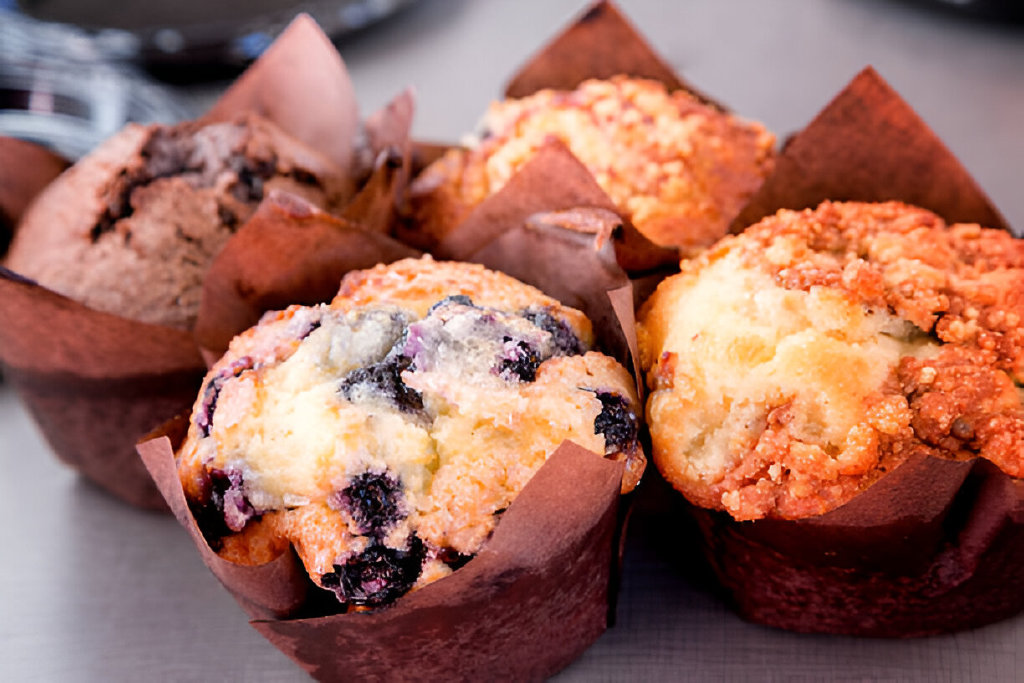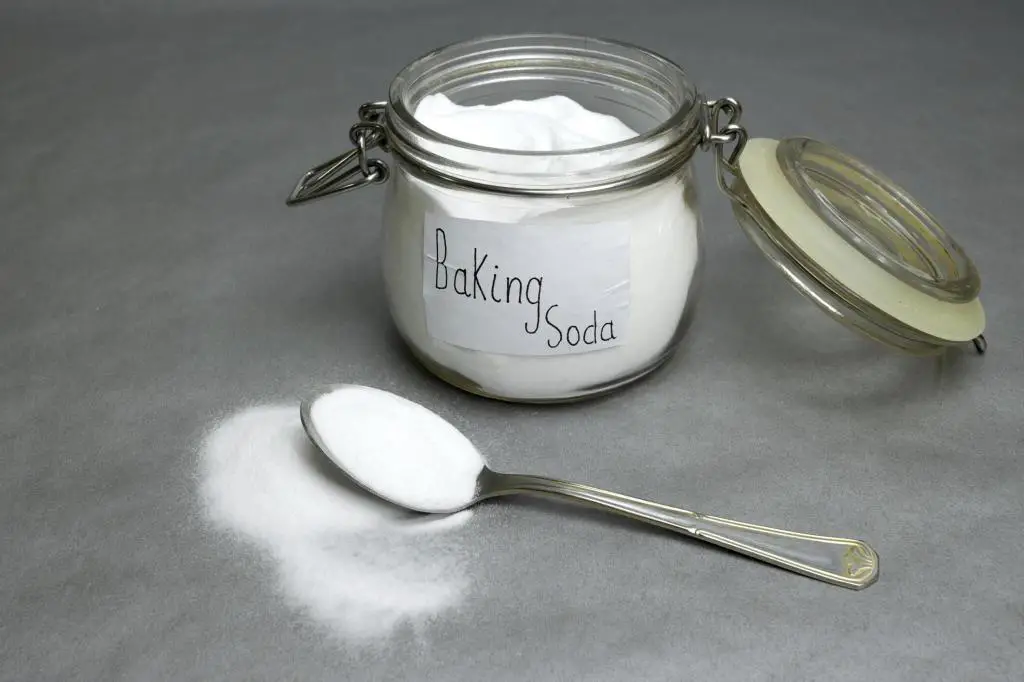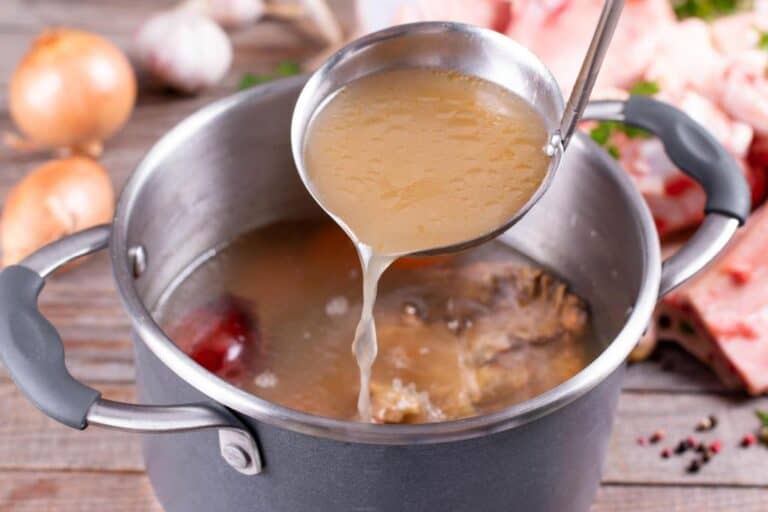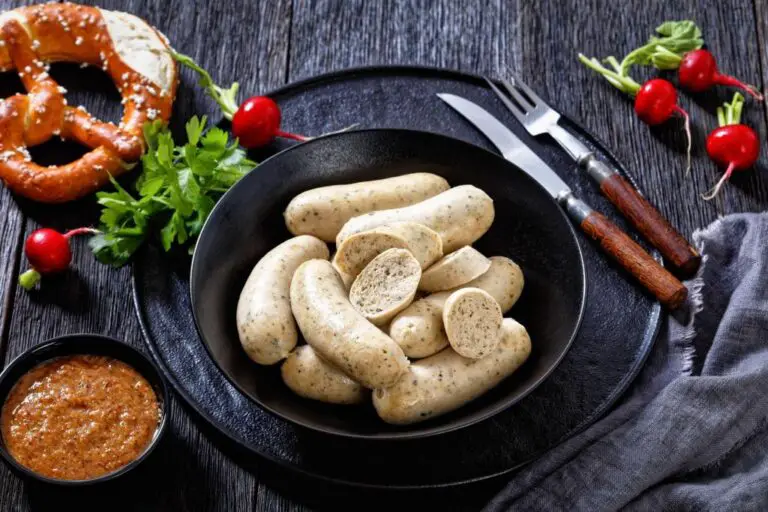Do You Need Baking Powder or Baking Soda for Perfect Muffins?

When it comes to baking delicious, fluffy muffins, the choice between baking powder and baking soda is crucial. These two leavening agents play different roles in baking. Understanding their differences can be the key to perfect muffins.
Whether you’re a seasoned baker or just starting out, knowing when and why to use each can significantly impact your baking results.
Leaving Agents in Baking: Introduction
Leavening agents play a crucial role in baking, acting as the secret behind fluffy, airy baked goods. They work by creating gas bubbles in the dough or batter, which expand during baking, causing the mixture to rise.
Without these agents, muffins, cakes, and other baked treats would turn out dense and flat. You must understand how these leavening agents work. It is key to getting the perfect texture and taste in your baking.
Baking powder and baking soda are two common leavening agents, but they operate differently. Baking soda needs an acid to work. Baking powder has both an acid and a base, so it’s more versatile. When making muffins, choosing the right agent is key. The right one, or mix, can greatly affect the muffins’ rise and texture.
What is Baking Powder?
Baking powder is a crucial ingredient in baking, serving as a leavening agent that helps baked goods rise and achieve a light, fluffy texture. It is a chemical compound typically composed of a combination of an acid (like cream of tartar) and a base (such as baking soda).
When mixed with liquid and heated, baking powder makes carbon dioxide gas. The gas creates bubbles in the dough or batter. This makes them expand and rise.
There are two main types of baking powder: single-acting and double-acting. Single-acting baking powder releases carbon dioxide gas as soon as it is mixed with a liquid, so it needs to be baked immediately for the best results.
Double-acting baking powder, on the other hand, releases gas in two stages: once when mixed with a liquid and again when exposed to heat. This makes it more versatile and forgiving, allowing for a longer preparation time before baking.
What is Baking Soda?

Baking soda, or sodium bicarbonate, is a versatile leavening agent commonly used in baking. It is a white, crystalline powder with a slightly alkaline nature. When baking soda is combined with an acidic ingredient, it undergoes a chemical reaction that produces carbon dioxide gas. This gas forms bubbles that help dough and batters rise, creating a light and airy texture in baked goods.
Unlike baking powder, which contains both an acid and a base, baking soda requires an external acid, such as lemon juice, vinegar, or buttermilk, to activate it effectively.
In addition to its role in muffins, baking soda is frequently used in recipes for cookies and quick breads. Its ability to neutralize acidic flavors and enhance browning makes it a valuable ingredient in various baked goods.
Baking soda also has uses beyond the kitchen. It is good for cleaning and deodorizing. This is because it is mildly abrasive and neutralizes odors. Understanding its proper use in baking is essential for achieving optimal results in your recipes.
| Read: Too Much Milk Muffin Mix |
Baking Powder vs. Baking Soda: When to Use Each for Muffin
Choosing between baking powder and baking soda depends on the ingredients in your muffin recipe. Here’s a breakdown to help you decide:
1. Baking Powder: Ideal for recipes that do not contain an additional acidic ingredient. It’s often used in recipes that rely on the natural acidity of other ingredients, such as yogurt or sour cream, or in recipes where the acid is already balanced with the base in the baking powder. For instance, most standard muffin recipes use baking powder. This is because they often have a mix of acidic and neutral ingredients.
2. Baking Soda: Best for recipes that include acidic components. If your recipe includes ingredients like buttermilk, citrus juice, or vinegar, baking soda is the better choice. The acid in these ingredients reacts with the baking soda to produce carbon dioxide, which helps the muffins rise.
Here’s a quick reference table:
| Ingredient | Type of Leavening Agent Needed |
| No acidic ingredients | Baking Powder |
| Contains acid (e.g., buttermilk, lemon juice) | Baking Soda |
The Role of Proper Measurement
Accurate measurement is essential when using baking powder and baking soda. Using too much of either can result in an unpleasant taste or texture. For baking powder, a typical recipe calls for about 1 to 1.5 teaspoons per cup of flour. Using too much can cause the muffins to rise too quickly and then collapse.
For baking soda, a smaller amount is used—typically around 1/4 to 1/2 teaspoon per cup of flour. This is because baking soda is more concentrated and powerful. If you add too much baking soda, it can lead to a soapy taste and a coarse texture.
Tips for Perfect Muffins

To ensure your muffins come out perfectly every time, keep these tips in mind:
- Follow the Recipe: Stick to the specified type and amount of leavening agent as indicated in the recipe.
- Check Freshness: Both baking powder and baking soda lose their effectiveness over time. Check their freshness by performing a simple test. For baking powder, mix a teaspoon with hot water; it should fizz. For baking soda, mix it with vinegar; it should bubble.
- Don’t Overmix: Overmixing muffin batter can lead to tough muffins. Mix until the ingredients are just combined for a light and airy texture.
- Use Room Temperature Ingredients: Ensure that your ingredients are at room temperature to help the leavening agents work more effectively.
Muffin Recipe Comparisons
When comparing muffin recipes that use different leavening agents, you’ll see clear differences. They affect the texture and appearance. For instance, muffins made with baking powder often rise evenly, yielding a soft and light crumb.
In contrast, those using baking soda might have a denser texture but can be exceptionally moist, depending on the recipe. Visual clues are key. Muffins with baking powder have a more even dome and a tender crumb. Those with baking soda might have a darker crust and uneven rise.
Taste tests reveal further distinctions in texture and flavor. Muffins with baking powder are fluffier and more neutral. Those with baking soda can have a slightly tangy flavor. This is especially true if the acidic ingredients are not well balanced.
Each leavening agent affects the final product differently. It is crucial to understand their roles to make the perfect muffin.
Conclusion
In conclusion, whether you need baking powder or baking soda for your muffins largely depends on the other ingredients in your recipe. Understanding the roles of these leavening agents will help you bake muffins. They will be light, fluffy, and perfectly textured.
Follow the tips and use the right leavening agent. Then, you can master muffin baking and get yummy results every time.






